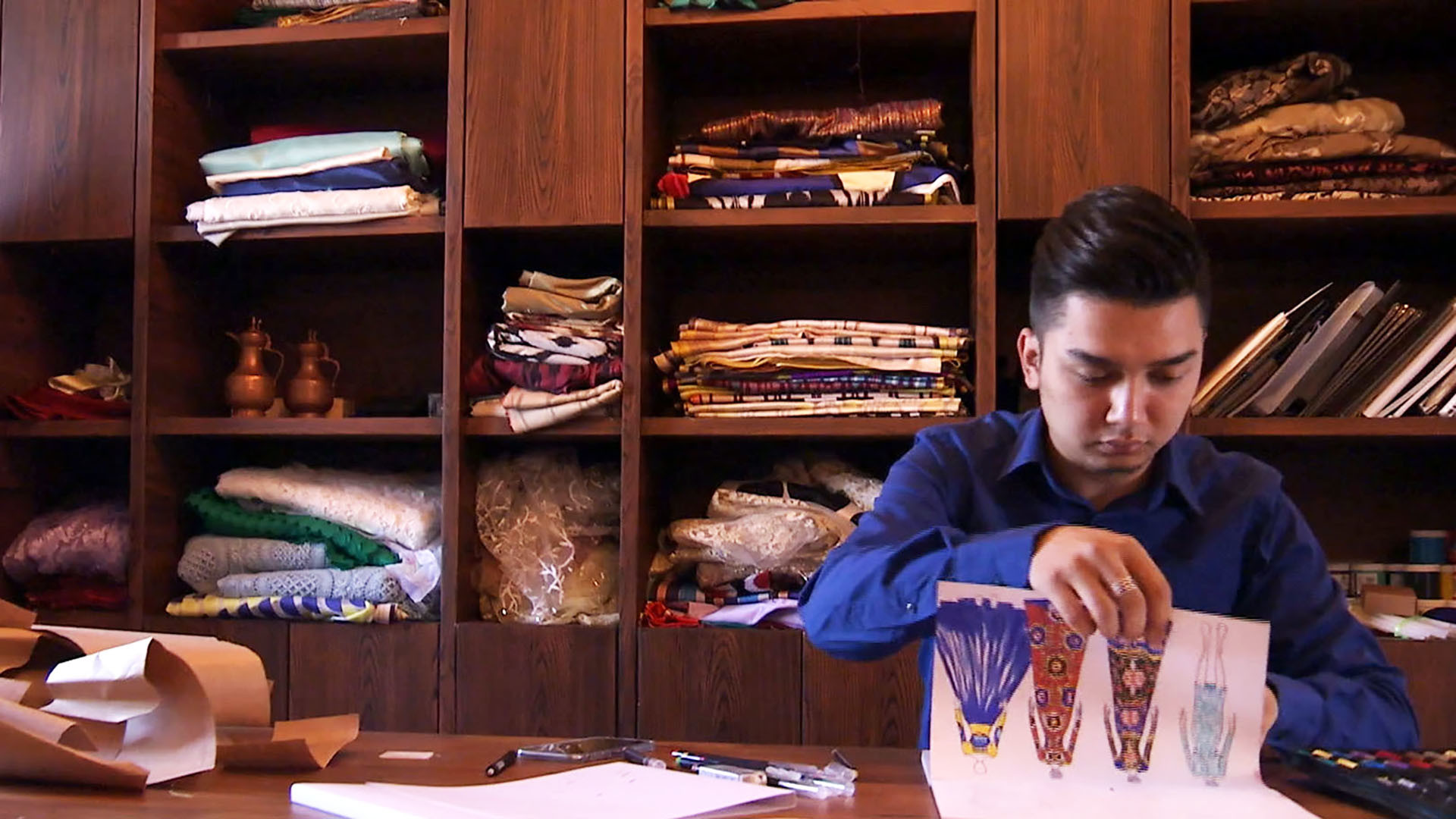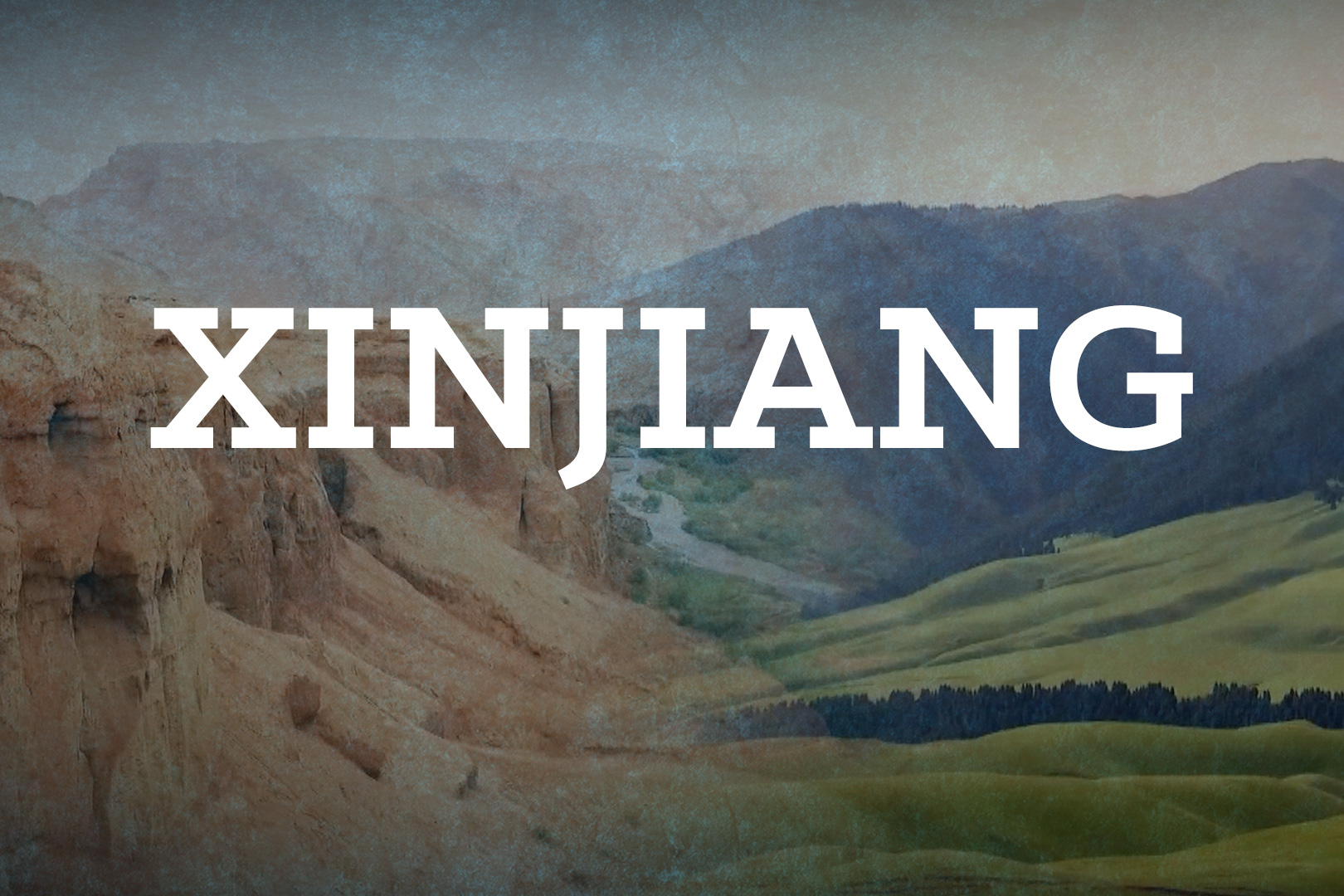From the series XINJIANG: Exploring China’s new frontier
China’s far western Xinjiang Uygur Autonomous Region is famous for its Atlas Silk. It’s mainly produced in the southern prefecture of Hotan. The fabric dates back over a thousand years ago. In 2008, Atlas Silk was listed as a national intangible cultural heritage. But it’s in danger of becoming a lost art. As a part of our series Xinjiang: Exploring China’s New Frontier, reporter Han Bin profiles a young Uyghur fashion designer, who believes the craft can weave new links along the 21st Century Silk Road.

From Alim Adil, Xinjiang fashion designer
When I was a kid, my first memory of Atlas was that Mother would have worn Atlas dresses on some special festive occasions.
Atlas is called a living fossil of the Uyghur ethnic minority, a showcase of superb fabric design. The reflection of the time and culture is invisibly imprinted in the fabric. The crafts represent the best art of our ancestors.
Most of the fine steps cannot be done by machine.
The drawing skill, pattern design, and the tie-dye method used to create colors and patterns, are all in the mind of the artist.
I got into fashion designing by chance. When I studied in college, I was looking for my own style, a different positioning.
Five years ago, I began to study Atlas, and began using it in my products. I hope Atlas can be widely used in daily clothing.
I also hoped to weave my own style of Atlas, which represents my language in fashion. I worked with the veteran artists,
trying to bring some innovation and development to its traditional techniques and craft.
What appeals to me most in Atlas, are the changing patterns and rich colors. Whenever I see a beautiful Atlas silk, it usually fires my passion to transform it into some stylish clothing.
The silk is an embodiment of the wisdom and civilization of Xinjiang ethnic groups through changing times; mere words cannot express the value and charm.
Atlas should not be forgotten; it should have a place in more people’s lives. It’s so precious that deserves respect. Its beauty should be shared by all.
Atlas does not belong to any particular person, region or ethnic group; rather it’s a wonderful gift for all mankind. So it shouldn’t only be used in Xinjiang.
Atlas has become part of my life. I hope my work can help draw more people’s attentions to it. I think I’ve helped raise its popularity, with my ways of modern interpretation. In fact, Atlas helps me understand myself better. It helps me realize where I come from, and where shall I go. It’s a learning process.
In all of my designs, such understanding becomes my core concept of design. I stick to following the ethnic cultural connotation, with the modern interpretation of the traditional approach, and to show the best of it. This is fashion.
Atlas has enough weight to be shown on the international stage. My biggest dream is to become the tie and link between Atlas and the world, to let Atlas shine on top of the world’s fashion stage.
 CGTN America
CGTN America





